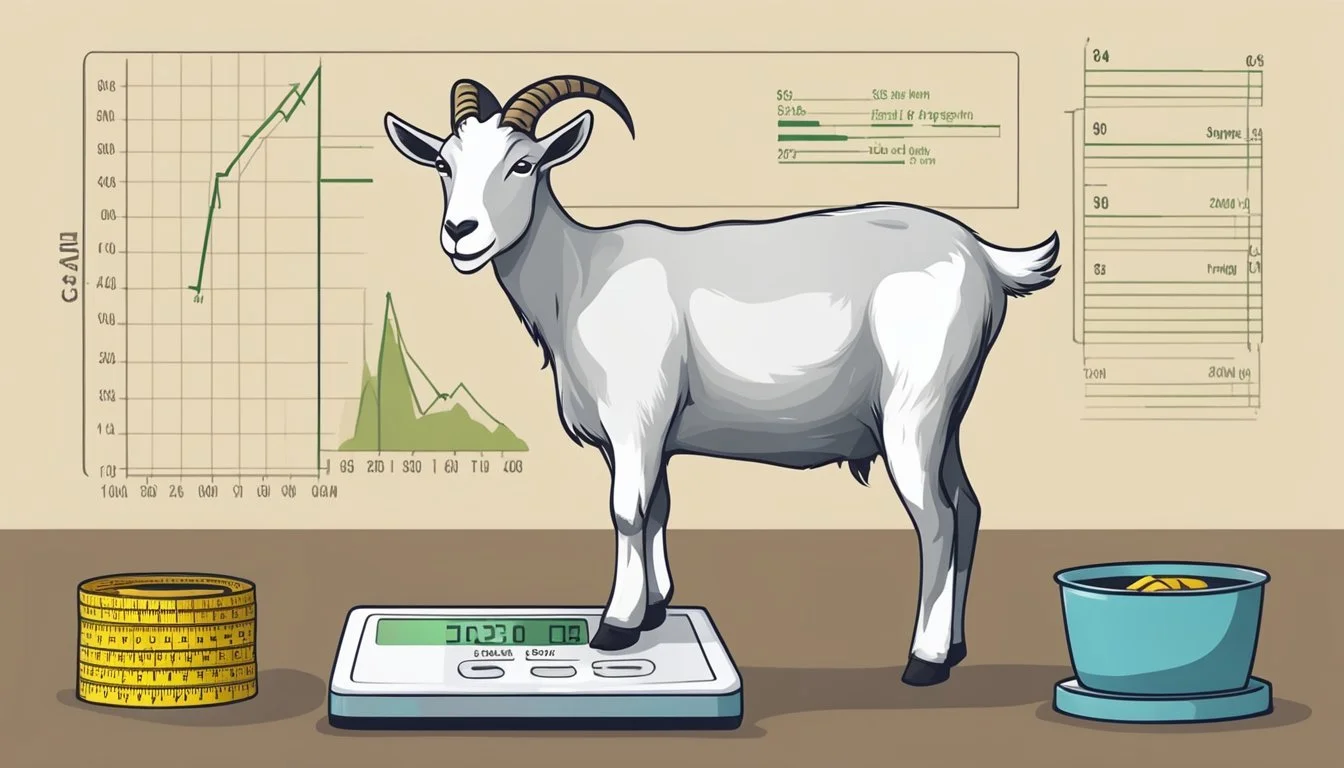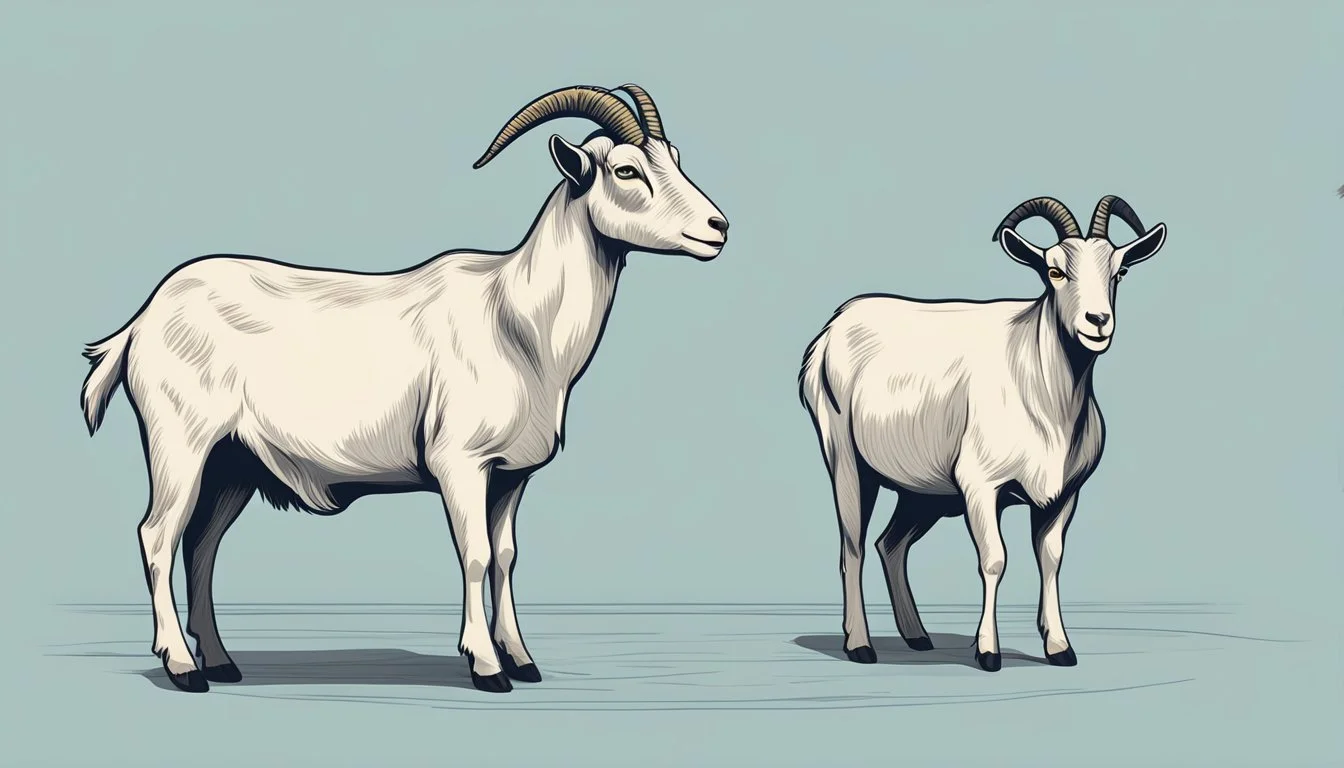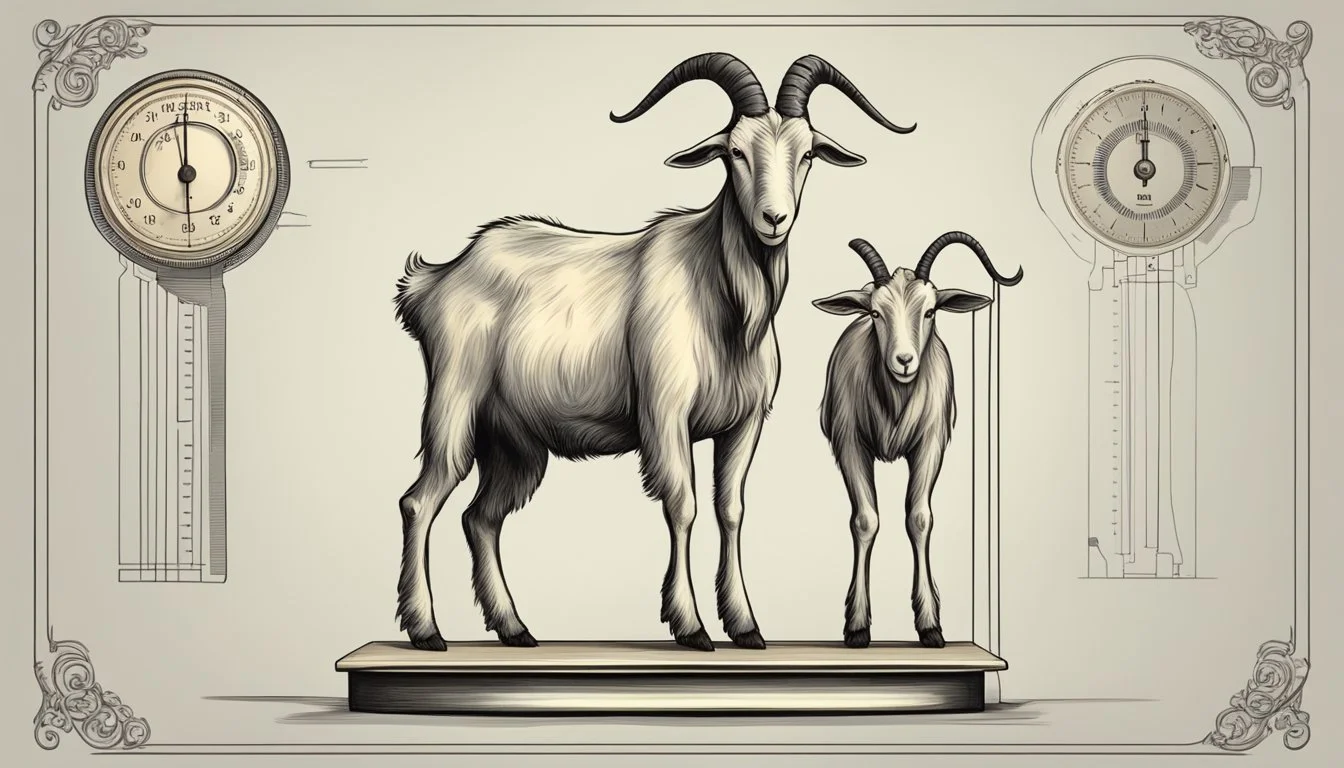How can I tell if a goat is overweight or underweight?
Assessing Caprine Body Condition
Determining the appropriate body condition for goats is an important aspect of goat care. Overweight goats face additional stress on their limbs and joints, which can lead to lameness and other health concerns. It's essential for owners to be able to assess whether their goats have excess fat as this can also lead to metabolic issues. A balanced body condition is a sign of a healthy goat and is crucial for their overall well-being and longevity.
To accurately assess if a goat is overweight or underweight, owners must examine physical traits and behavior. Observing a goat's rib area is a common method; if the ribs are difficult to feel through a thick layer of fat, this might indicate the goat is carrying excess weight. Similarly, an underweight goat may show a prominent spine or hip bones, signifying a lack of sufficient body fat. Behavioral changes like lethargy or diminished appetite can also indicate health issues related to body condition.
Regularly monitoring a goat's body condition helps owners make informed decisions about diet and management, ensuring their goats maintain an ideal weight for optimal health. Adjustments to feeding regimens, combined with appropriate veterinary care, can correct weight issues, leading to a happier and more productive herd.
Understanding Body Condition Scoring
Body Condition Scoring (BCS) is an essential tool to assess the health and nutritional status of goats. It enables producers to manage feeding effectively and head off health problems related to weight.
Basics of Body Condition Score (BCS)
Body Condition Score (BCS) is a system that ranges from 1 to 5 in goats, indicating their overall fleshiness or fat cover. The scoring is done in half-point increments, where a BCS of 1 indicates that a goat is extremely thin, while a BCS of 5 suggests the goat is overly fat. The ideal condition for a goat typically falls between 2.5 and 4, with variations depending on specific considerations such as life stage and breeding status. This visual and tactile assessment is an integral part of livestock management, ensuring animals are neither malnourished nor obese.
Applying BCS to Goats
When applying BCS to goats, one must consider both visual appearance and physical palpation of key anatomical areas. Thin goats may show prominent bones with little muscle mass and fat, whereas fat goats may have excessive padding, hiding their bone structure. To properly apply BCS, handlers assess specific areas like the loin, ribs, and tailhead. For example, an ideal score for goats falls in the range of 2.5 to 4.0, taking into account factors such as pregnancy and lactation which influence nutritional needs. Regular BCS checks help ensure that goats receive the appropriate quantity and quality of feed to maintain their ideal condition.
Assessing Physical Characteristics
Evaluating a goat's body condition is critical in determining if it is overweight or underweight. This involves observing its physical shape and palpating specific areas to gauge fat and muscle.
Identifying Visual Indicators
A visual assessment can provide initial clues to a goat's body condition. Underweight goats often have a pronounced backbone and ribs that are clearly visible, indicating insufficient fat cover. Their overall shape may appear sharp and angular. On the other hand, overweight goats tend to have a more rounded appearance, with no discernible ribs or spine due to excessive padding.
Checking Fat Cover and Muscle
To determine fat and muscle condition, one must feel the goat’s body in key areas:
Ribs: Gently press along the goat's side. If the ribs are easily felt with little to no fat covering, the goat may be underweight. If you cannot feel the ribs at all, it suggests an overweight condition.
Spine: Run your hand along the backbone. A healthy goat should have a thin layer of fat covering the spine but it should still be palpable.
Muscle: Examine the goat’s loin and thigh muscles to ensure they are firm and well-developed, not excessively padded or, conversely, underdeveloped.
Each area should be inspected methodically to accurately assess the goat's condition.
Factors Influencing Weight
Several factors are pivotal in determining a goat's weight, including its diet, breeding status, and overall health. Understanding these factors can help owners maintain their goats at an appropriate weight.
Dietary Impact on Weight
A goat's diet plays a critical role in its physical condition. They require a balanced intake of feed that includes grain, hay, and a suitable amount of protein to meet their energy needs. Overfeeding can easily lead to overweight goats, whereas a diet lacking in sufficient nutrients may result in underweight animals. Owners should tailor the diet to the specific needs of their goats, considering factors like age, activity level, and body condition.
Effects of Breeding and Pregnancy
Breeding and pregnancy significantly influence a goat's weight. Pregnant does, or female goats, naturally gain weight as they support the growth of their offspring. It is essential to monitor their condition to ensure they are not becoming overweight or undernourished, impacting both the doe's and the kids' health. Their dietary needs increase during this time, making it crucial to provide enough energy and protein for proper development.
Health Issues and Parasites
Goats may experience health issues and parasite infestations that affect their weight. Conditions such as anemia and diarrhea can be indicative of underlying health problems like parasitic infections. These health challenges often lead to weight loss and require immediate attention. Regular deworming and health check-ups can help identify and treat parasitic infections before they lead to significant weight changes.
Optimal Diet for Healthy Weight
Maintaining a healthy weight in goats requires a balanced diet tailored to their specific needs. Proper weight management involves understanding their nutritional requirements and implementing an appropriate feeding strategy.
Understanding Nutritional Needs
Goats are ruminants that thrive on a diet primarily composed of fibrous plants. They extract nutrients from plant-based food more efficiently when it contains high amounts of fiber. For a healthy weight, goats need a balance of carbohydrates, proteins, fats, vitamins, and minerals.
Carbohydrates: They get most of their energy from carbohydrates, and an excellent source for them is grass hay. Providing a steady supply helps meet their energy needs without leading to excessive weight gain.
Proteins: Adequate protein is essential for growth, milk production, and repair of body tissues. Sources like alfalfa hay and alfalfa pellets are high in protein and beneficial for goats. However, too much alfalfa can contribute to weight gain, so it should be balanced with other feeds.
Supplements: Goats may require supplements, especially if the forage quality is poor or during specific life stages such as pregnancy or lactation. Essential minerals like calcium, phosphorus, and trace minerals should be included in their nutrition program.
Feeding Strategies for Weight Management
Creating a feeding plan for goats involves monitoring their body condition and adjusting their diet accordingly to maintain an optimal weight.
Calorie Control:
Restrict high-calorie grains like corn and oats, as they can lead to unnecessary weight gain if offered in excess.
Use a controlled amount of grains to prevent metabolic disorders and obesity. Remember that grains should complement forages, not replace them.
Forage Quality:
Offer a variety of forages to balance the diet. High-quality grass hay should be the foundation of their diet, as it promotes proper digestion and weight control.
For underweight goats, increase the quality and quantity of forage before resorting to additional grain supplements.
By considering the energy and nutrient content of different feeds, goat owners can formulate a diet that promotes a healthy weight in their goats, while fulfilling their nutritional requirements.
Practical Goat Care and Management
Proper goat care and management are crucial for maintaining optimal body condition and overall health. Ensuring that goats have adequate housing, as well as regular monitoring, are key factors in identifying and addressing weight issues.
Housing and Space Requirements
A goat's housing should provide protection from weather extremes, particularly during the winter months. They need a clean, dry, and well-ventilated shelter, which helps prevent respiratory issues and overheating. In terms of space, whether in a pen or a pasture, goats require enough room to move freely and exhibit natural behaviors. An overcrowded environment can lead to stress, disease, and difficulty in assessing individual goat body condition.
Minimum space requirements:
Dry lot or pen: 20 square feet per goat
Pasture: 250 square feet per goat
These spaces need to be secured and checked regularly to keep the goats safe from predators and prevent escape.
Routine Monitoring and Check-ups
Regular check-ups are vital to raising goats successfully. A thorough assessment involves a hands-on approach to evaluate the goat body condition. Key areas to assess are the prominence of the backbone, visibility of ribs, and the amount of fat over the sternum/chest. Underweight goats will have a more pronounced backbone and visible ribs with little to no fat on the sternum, whereas overweight goats may have a less evident bone structure due to excess fat.
Bi-monthly checklist for routine monitoring:
Visual inspection: posture, activity level, and social behavior
Physical examination: body scoring, hoof trimming, and dental check
In addition, maintaining appropriate stock levels according to the available space and resources is critical to ensure each goat receives sufficient nutrition without competition stress. This is essential for managing body condition effectively.
Special Considerations
In managing goat weight, it's essential to account for seasonal changes and the diverse needs of different goat breeds. These factors profoundly affect dietary requirements and hence the condition of the goat.
Weight Management in Different Seasons
Spring and Summer: During these seasons, forage quality typically improves, which may lead to goats gaining weight. Owners should monitor the body condition of their goats, especially bucks, as excess weight can impede fertility. Maintaining a balance between grazing and supplementary feeding is vital to prevent overweight issues.
Fall and Breeding Season: This is a critical time for does as breeding season approaches. Goats often require additional nutrition to support breeding activities, particularly if a doe is carrying twins or more. Adjust feeding regimens to ensure does maintain optimal body condition, neither too skinny nor overweight, which could affect both conception rates and the health of the offspring.
Winter: Cold weather increases energy demands. Skinny goats or those with lower body fat reserves may require extra feed to maintain body heat and energy levels. Owners should closely monitor their goats' body condition, with considerations for less active animals like mini goats, to avoid unhealthy weight loss during the winter months.
Addressing Special Needs of Varieties of Goats
Mini Goats: Due to their smaller stature, mini goats have different metabolic requirements. They are also more likely to become overweight if overfed. Therefore, it's crucial to tailor their diets carefully and conduct regular body condition scores to ensure their energy needs are met without excess weight gain.
Bucks: Male goats, especially those not used for breeding or outside of breeding season, can easily become overweight. Owners should adjust their diets accordingly and provide plenty of opportunities for exercise to maintain a healthy weight.
Breeding Does: Goats with special nutritional needs, such as pregnant does or those in lactation, especially those prone to twinning, must be given particular attention. Adjust their nourishment to accommodate the higher energy demands, ensuring they receive all necessary nutrients for both themselves and their growing offspring.
Common Weight Issues
In order to maintain optimal health, goats need to have a well-balanced weight. Common weight issues in goats can range from underweight to obesity, each presenting unique health challenges and care requirements.
Weight Loss in Goats
Weight loss in goats can be an indication of several health issues, such as parasitic infections like worm infestation, which is a leading cause of poor condition in these animals. Other contributing factors to weight loss could include dental problems that impede their ability to eat properly, or a lack of essential nutrients like calcium and copper, leading to copper deficiency. If a goat appears too chunky, especially around the barrel, this could actually be bloating rather than excess fat, and warrants further investigation.
Understanding Obesity in Goats
On the flip side, obesity in goats can contribute to joint stress, lameness, and a higher propensity for metabolic disorders. A goat is considered obese when excess fat makes it difficult to feel their ribs or spine through the skin. Condition, or the body state of the goat, is crucial to monitor, as an overweight animal may experience difficulties with breathing, reduced mobility, and overall compromised health.
Supplementary Information
When managing a goat's weight, understanding the appropriate supplements and best practices for monitoring changes is essential. Tailoring these aspects to the animal's specific needs can effectively contribute to a healthier weight status.
Recommended Supplements and Treatments
Providing the right supplements can be beneficial in maintaining an optimal weight in goats. Goats may benefit from a diet enriched with barley, as it offers a good balance of nutrition and energy. However, moderation is key, as too much grain can lead to weight gain. A standard scoop of barley per day could suffice, depending on the goat's size and condition. For underweight goats, adding a little dark beer — one gallon spread out over several days — can stimulate appetite and provide additional nutrients, though this should be done sparingly and under veterinary guidance. It is always imperative to consult a veterinarian before administering any supplements or treatments to ensure they suit the individual goat's health needs.
Best Practices for Observing Changes
To effectively monitor a goat's weight,
Frequent Observation: Check the goat regularly for any signs of weight change. Look for visual cues and use hands-on assessments to feel for rib prominence or excess fat.
Consistent Feeding Routine: Establish and stick to a consistent feeding schedule, paying close attention to the amounts of roughage and feed provided.
Record Keeping: Keep a log of the goat's weight, dietary changes, and any supplements provided. This will help track progress and spot any trends over time.
By integrating these best practices and carefully selecting supplements, one can support a goat's well-being and promote a healthy body condition.
Conclusion
Determining whether a goat is overweight or underweight is vital for their overall health and well-being. Goat care involves regular assessment of their body condition to ensure they are not carrying excess fat or lacking necessary nourishment. A well-designed nutrition program is crucial for maintaining healthy weight levels in goats. They should be fed a balanced diet that promotes gradual weight gain if underweight, taking care not to overfeed and risk obesity.
Body condition scoring (BCS) is a reliable method to gauge a goat's weight. Caretakers should examine the shoulders, spine, and ribs; these areas can indicate excess fat or a lack thereof. Furthermore, a healthy rumen—the largest chamber in the goat's digestive tract—is essential for processing feed effectively, thus influencing weight.
Owners should monitor their goats regularly, altering their nutrition program as needed to achieve an optimal weight. It's important to remember that every goat is individual, and what is normal for one may not be for another. Persistent weight issues, despite a proper diet, should warrant professional advice.
In summary, regular monitoring and adjustment of care practices ensure goats maintain a healthy weight, leading to a contented and productive life.






